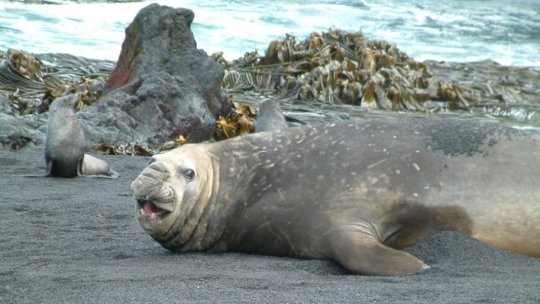[ad_1]
A research team led by The Australian National University (ANU) has found the first proof that Antarctica is not isolated from the rest of the Earth, with the discovery that foreign kelp had drifted 20,000 kilometres before surfing to the continent’s icy shores.
Scientists had previously thought that Antarctic plants and animals were distinct from others around the world because they were isolated, but this new research indicates that these differences are almost entirely due to environmental extremes rather than isolation.
The kelp’s journey is the longest known biological rafting event ever recorded and has helped the team re-evaluate the science of ocean drift that is used to track plastics, aeroplane crash debris and other floating material across our seas.
Lead researcher Dr Crid Fraser from the ANU Fenner School of Environment and Society said DNA analysis found one kelp specimen drifted all the way from the Kerguelen Islands and another from South Georgia.
She said the foreign kelp essentially surfed to Antarctica, with the help of wind-driven surface waves during storms.
“This is an unequivocal demonstration that marine species from the north can reach Antarctica,” Dr Fraser said.
“To get there, the kelp had to pass through barriers created by polar winds and currents that were, until now, thought to be impenetrable.”
Modelling shows how the kelp could have reached Antarctica, which overturns scientific understanding of drift dispersal in the Southern Ocean, Dr Fraser said.
“Our findings also indicate that plants and animals living on Antarctica could be more vulnerable to climate change than we had suspected.”
Co-researcher Dr Adele Morrison from ANU and the Australian Research Council’s Centre of Excellence for Climate Extremes led the oceanographic analyses.
“Strong westerly winds and surface currents are expected to drive floating objects north and away from Antarctica, but when the disruptive influence of Antarctic storms is factored in, that all changes,” said Dr Morrison from the ANU Research School of Earth Sciences.
Using cutting-edge modelling techniques, the team began to see how large waves arising during storms could help kelp rafts to reach Antarctica.
“Once we incorporated wave-driven surface motion, which is especially pronounced during storms, suddenly some of these biological rafts were able to fetch up on the Antarctic coastline,” Dr Morrison said.
If plants and animals get to Antarctica fairly frequently by floating across the ocean, they will be able to establish themselves as soon as the local environment becomes hospitable enough.”
Dr Erasmo Macaya, from Universidad de Concepción and Centro IDEAL in Chile, is the member of the team who found the foreign kelp at the Antarctic beach.
“The kelp does not grow in Antarctica but we know it can float, and can act as a raft, carrying many other intertidal plants and animals with it across oceans,” he said.
The research is published in Nature Climate Change.
Story Source:
Materials provided by Australian National University. Note: Content may be edited for style and length.
[ad_2]















